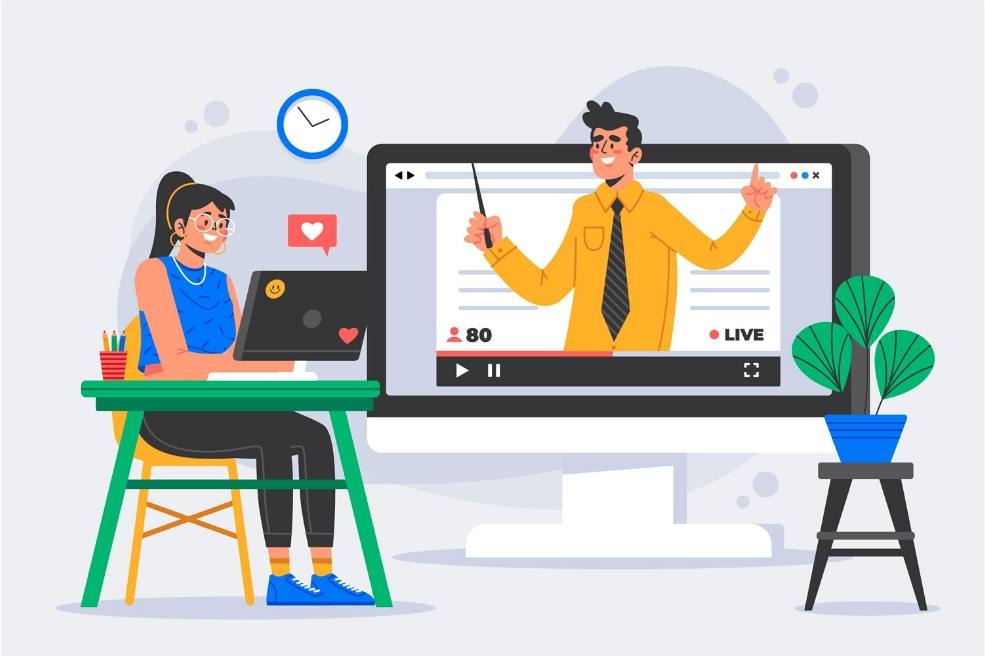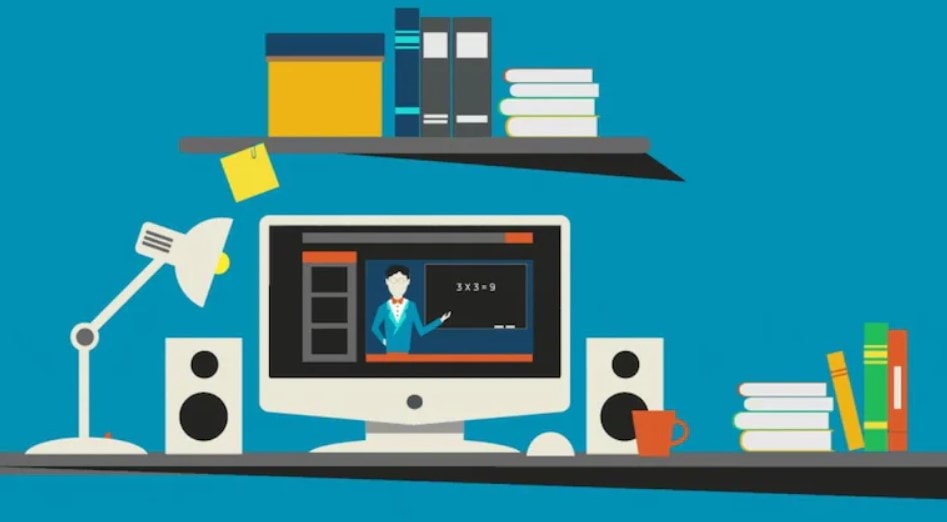E-learning, which is defined as learning that is supported via the use of technology, comes in a variety of shapes and sizes. Few instructors, however, are aware of how far e-learning examples can go. In this article, I have shared 5 examples of e-learning.
Although the applications of e-learning extend much beyond the four we will examine here, they are representative of its range.
Due to technological developments, our culture may now shift away from the more conventional, in-person educational models and toward the more flexible, virtual ones.
People can learn anything — Python programming, Japanese, and even accounting — using modern software systems without ever leaving their homes.
You switch on your computer and instantly have access to insights from illustrious individuals in fields as diverse as chef and academics.
You may learn in-demand skills via courses designed with input from businesses.
Thankfully, this is now feasible with the help of online education. As a result, people from all walks of life are now able to benefit from its accessibility, affordability, and opportunity. Previously excluded groups may now participate because of no longer being geographically isolated.
The e-learning market is expected to be worth more than $243 billion by 2022, growing as access to and confidence in technology do so.
Expanding one’s horizons via education has always existed, but it was formerly only available to a select few who happened to be in the right place at the right time.
An online, interactive degree course is now available. You may save a lot of money and time by studying online instead of at a traditional institution.
Contents
Here are 5 examples of e-learning:
- Airbus saving millions of pounds with e-learning
- eLearning Example of Massive Open Online Courses
- E-Learning Examples in Higher Education
- “Nano-Degrees” or “Micro-Credentials”
- Interactive Elearning Virtual Workshops
2. E-Learning Example of Massive Open Online Courses (MOOCs)
From topics like “Shaping the Future of Work” and “Google Cloud Architecture” to more broad topics like “The Science of Well Being” and “How to Draw From Beginner to Master,” there’s something for everyone.
You don’t have to attend a traditional college or university to get credentials like a “Professional certificate” in Data Engineering on Google Cloud or a “Reiki Master” designation for working with animals.
More than 4,600 courses are available on the Coursera website right now. Their online training examples include the ones below:
- Certificate courses for working professionals that are both engaging and realistic in their treatment of potential workplace challenges.
- Certificates earned on the MasterTrackTM at approved universities may be used toward further degrees.
- Studying a foreign language.
There is now a university-like setting available online thanks to massive open online courses (MOOCs), which provide a wide range of scenario-based lessons taught by renowned professors.
Another example is edX, which has over 2500 free courses available on its website. Accredited universities such as Harvard University, MIT, and UC Berkeley generated these examples.
In addition, they provide a star rating system to help you gauge how other users felt about the same issue.
The price of this alternative is far cheaper than that of attending college on a physical campus. They can more readily disseminate information and save money on housing and course materials.
E-learning has several benefits, one of which is that it makes education and e-learning available to a larger population.
In order to guarantee that you recall the most important information, several of these courses use recorded “lectures” and periodic “exams.”
The classes are accessible whenever you want, so you may study whenever it’s convenient. This broadens its appeal to learners with a diversity of styles.
What you’ll see on your test depends on the credential you’re pursuing. These tests might range from brief multiple-choice quizzes to extended writing assignments graded by a class of students’ peers. Another instance might be a final test or a keystone project that is evaluated by the professor or the class as a whole.
The number of available e-learning samples is rising. They provide opportunities to learn about a topic that interests you at a little expense, rather than following a predefined curriculum via standardized, conventional education.
4. “Micro-Credentials” or “Nano-Degrees”
Online education is superior to traditional classroom instruction for job-specific training.
Updating a typical college’s curriculum may be time-consuming because of the high standards that are required.
This is a perfect illustration of how the rise of online education is changing the face of academia.
Training programs for niche skills or rapidly expanding fields may be developed using e-learning technologies. It just takes a few weeks or months to develop a course.
This online learning case study shows how simulation software may be used to train future professionals.
The creation of nano-degree courses is often a joint effort between universities and companies facing a skills need. Their number one priority is tailoring their education to fit the specifics of their position.
To meet the needs of major businesses, the eLearning industry is shifting towards nano-degrees and micro-credentials. As a result of technological advancements, data collection has increased.
However, a gulf sprang up between the businesses in need of individuals with data-analysis skills and the people who really had the necessary training.
To address this need, businesses like Udacity have created “nano-degree” programs. They are tailored to provide individuals with the specific skills desired by the corporate world.
The programs help students acquire marketable skills that may be used immediately in the workplace, therefore reducing or eliminating the skills gap that exists in the job market.
Students will get experience with actual workplace situations via scenario-based e-learning. They ensure that students are work-ready by teaching them particular software skills, giving them feedback and training, and so on.
This kind of eLearning case is often used in the IT sector. The pace at which software develops and changes is far outstripping the time it takes educational institutions to provide updated course materials.
It is challenging to produce graduates of good quality. In particular, those who have shown proficiency in a certain piece of software that is essential to the company’s operations.
If you want to increase your marketability to potential employers, a nano-degree program may be the way to go. If you’re in a hurry to find new work, this eLearning case study is an excellent choice because of how little time it takes to complete it.
However, nano-degrees aren’t limited to IT specialists; Udacity also offers courses via its School of Business.
A four-week medical billing and coding course is another kind of eLearning.
This example would guide you through a typical scenario of a software company’s sales process, or 90-hour sales boot camps that help you find a sales job — particularly software as a service company like Salesforce and Zoom Video — with this example taking you through a scenario similar to the sales process at software companies.
AT&T collaborated with Udacity on an e-learning project. Through its philanthropic program, AT&T Aspire, they’re offering nano-degrees.
Quick Links:




